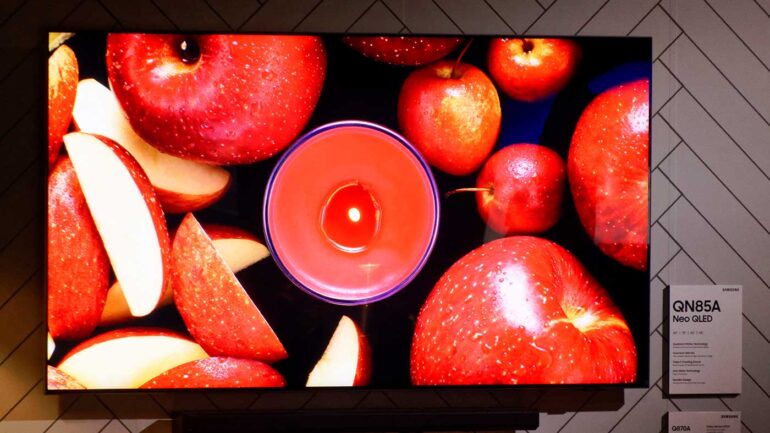Samsung’s new Neo QLED TVs combine two cutting-edge display technologies to deliver improved contrast, higher refresh rates and thinner form-factors.
I got a glimpse of the company’s latest 8K and 4K Neo QLED TVs during a recent Sydney-based showcase. If you’re thinking of upgrading your home theatre setup sometime this year, here’s what you need to know about them.
RELATED: Samsung’s 2021 TV Range Is Out Today And Here’s The Australian Pricing
In 2021, Samsung is bringing a mammoth forty-five new TVs to the Australian market (you can find the entire range along with pricing here).
Of these, about a quarter fall under the banner of a new display technology that Samsung has branded Neo QLED. The new Neo QLED 8K range replaces the old QLED 8K range on the high-end of things. Meanwhile, the (relatively) more-affordable Neo QLED 4K range fits between those 8K TVs mentioned above and the company’s freshly-updated roster of QLED TVs.
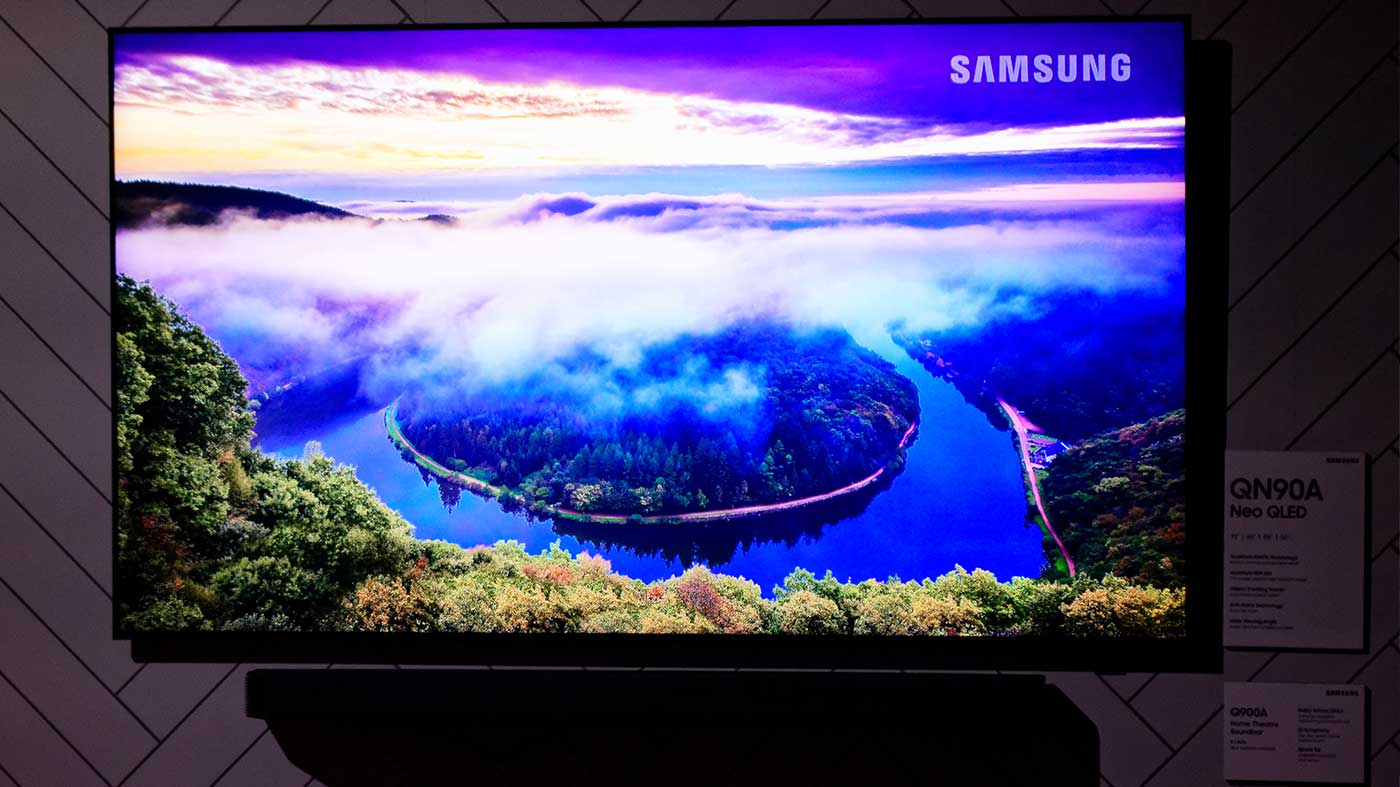
If you fancy a 4K model, you’ve got the Samsung QN90A and QN85A to choose from. The former is available in 75-inches, 65-inches, 55-inches and 50-inches while the QN85A can be found in 85-inches, 75-inches, 65-inches and 55-inches. If you’re keener to go all the way on 8K, it’ll cost you. Like its 4K counterpart, the range breaks down into two models: the QN900A and the QN8000A. Each of these is available in either 85-inches, 75-inches and 65-inches. If you’re looking for a reason to upgrade, the QN900A boasts a higher peak brightness and a superior speaker system with object-tracking-sound (OTS).
Resolution aside, Samsung’s 4K and 8K Neo QLED TVs have more in common than not.
Compared to their 2020 counterparts, the headline improvement here the Neo QLED setup.
Samsung has essentially traded out regular LED bulbs for smaller Mini-LED ones, which the company are marketing as ‘Quantum Mini LED’. This seemingly-small detail accounts for a slew of other technical improvements such as better contrast, brighter colours and deeper blacks that don’t lose out when it comes to visible detail.
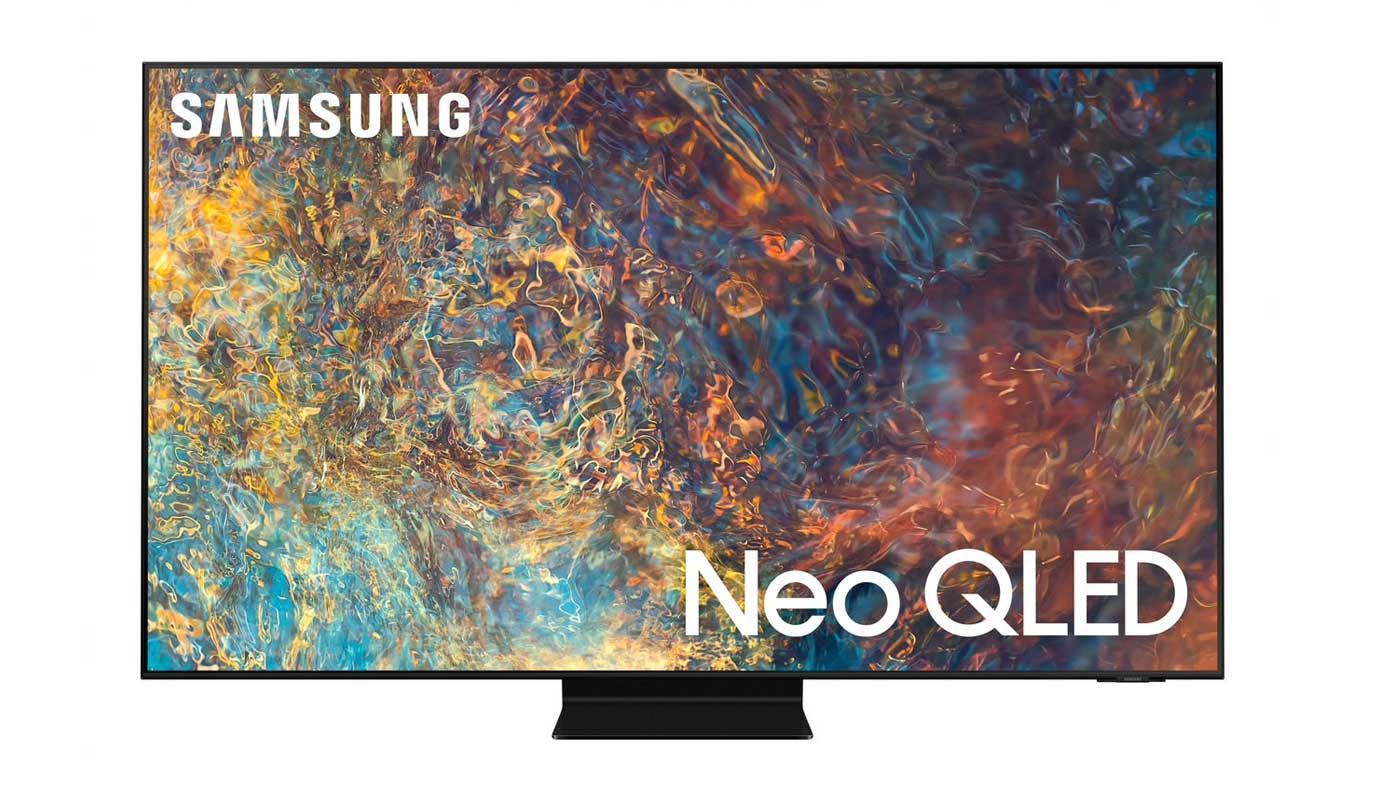
Beyond that, Samsung’s Neo QLED TVs are also 50% thinner, powered by a new Neo Quantum Processor and support up to 120Hz refresh rates. They play nice with Nvidia G-Sync and – for the first time – AMD FreeSync Premium Pro. Last but not least, they come bundled with a nifty solar-powered One Remote made from recycled plastic.
As for differences, the most visible of these is that the QN900A 8K Neo QLED TV sports Samsung’s almost bezel-less Infinity Design while the QN800A and the other 4K Neo QLED TVs do not. Samsung is also holding back the newly redesigned Slim One Connect Box exclusively for those willing to shell out for 8K. Suppose your home theatre setup includes multiple next-generation consoles. In that case, this is a pretty important detail because the new One Connect Box has four HDMI 2.1 ports, while Samsung tells us that the QN90 only has two HDMI 2.1 inputs and the QN85 is stuck with just one.
An Improved Gaming Mode
If you’ve bought a smart TV anytime over the past few years, there’s a decent chance it might have a dedicated game mode. Regardless of whether this feature is buried somewhere in the settings menu or configured to kick in whenever you turn on your gaming console of choice, chances are it often feels a little inconsistent or inconsequential. Usually, it’s no more than a toggle, and it’s sometimes difficult to see and feel the difference that a dedicated Game Mode on your TV can make.
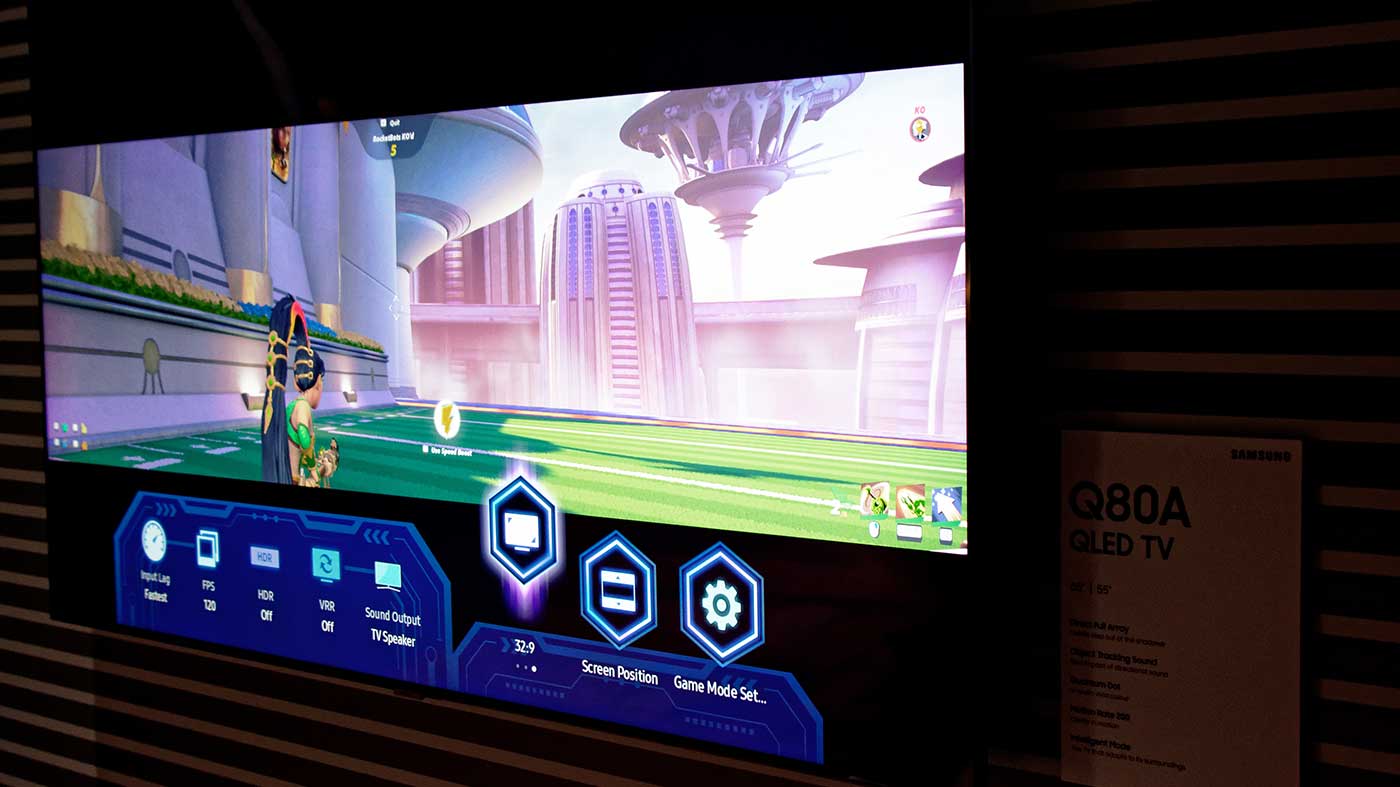
With their 2021 Neo QLED TVs, Samsung is trying to solve that problem with the new Game Bar. As opposed to a mode you just set and forget, the new Game Bar menu promises to give you a lot more control. The overarching idea that Samsung is pushing here is that if your brand-new QLED is the best screen you own, you should be able to use it for gaming however you want. To that end, they’re giving you a much broader settings menu. You can tinker with the refresh rate, toggle HDR or VRR and tighten up on any input lag you might be experiencing. If you connect it to a PC, it even supports ultra-wide aspect-ratio playback.
QNED, Neo QLED And Mini-LED Explained
If you’re not deep into the world of display panel technologies, the armada of acronyms found in the TV section of your local JB Hi-Fi can be more than a little intimidating.
Here’s the shortest version I can manage: Traditional LCD-LED TVs pair up an LCD panel with an LED backlight to produce images on a screen. LCD-LED TVs are significantly cheaper to produce than the alternatives but subject to a bunch of limitations. Specifically, they can’t match the per-pixel backlighting of OLED nor the colour saturation of QLED, which brings a Quantum Dot filter into the mix.
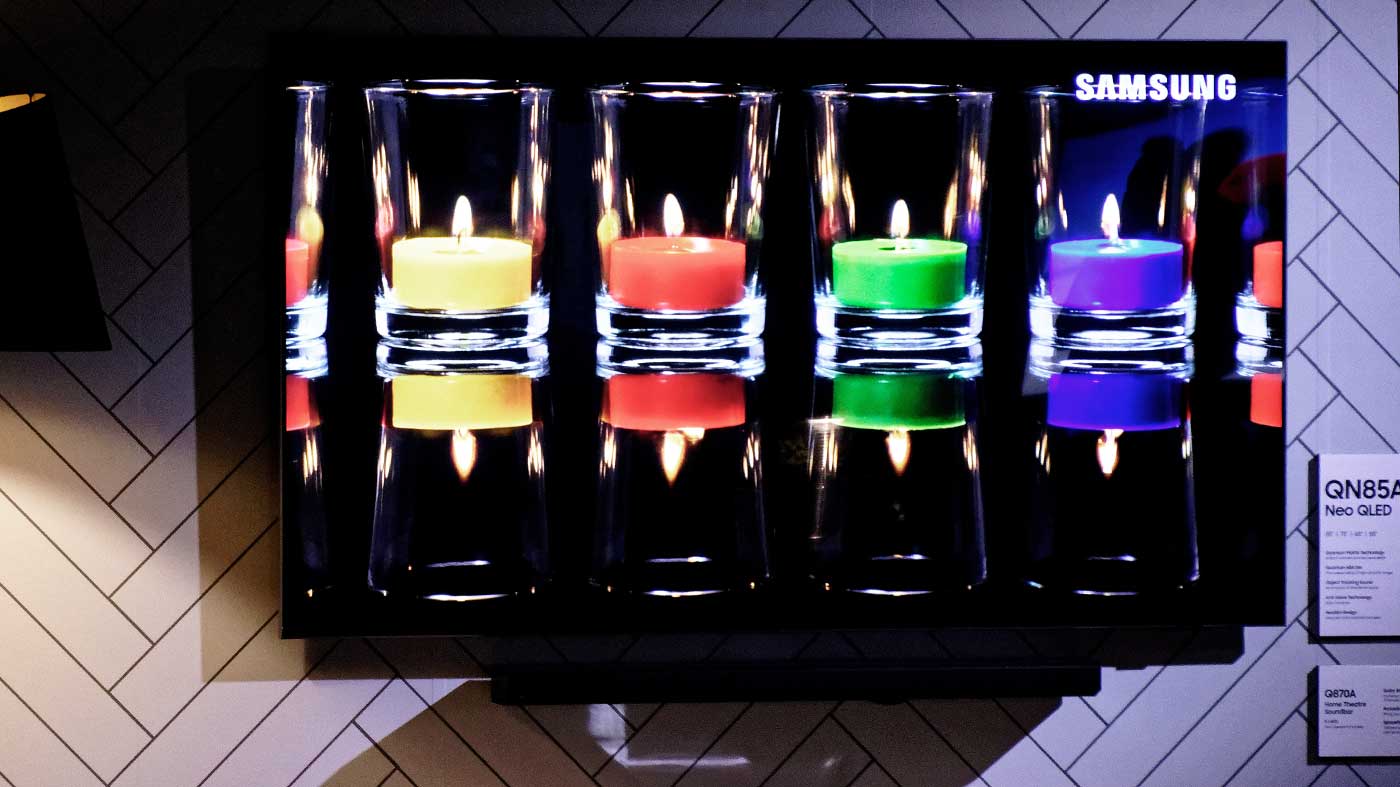
While rivals like Sony, LG and others have rushed to embrace OLED, Samsung have stuck by QLED for several years – opting to enhance and upgrade the formula a few times along the way. This year’s Samsung Neo QLED range comes across as their most ambitious effort to iterate yet.
Samsung has essentially traded out the regular LED backlight found in their QLED TVs for one that uses smaller Mini-LED ones. Mini-LEDs work more-or-less the same way as standard LEDs do with one crucial difference. They’re about forty times smaller. That means you can fit more of them across the same amount of surface area. The more Mini-LEDs you have, the more precise the backlighting can be. This detail might seem small, but it paves the way for some pretty tangible technical improvements.
All told, jumping from QLED to Neo QLED gets you thinner screens, better contrast, 120Hz refresh rates and deeper blacks that don’t lose out when it comes to detail.
Can Neo QLED Beat OLED?
I only had a few hours to gaze upon Samsung’s latest generation of electronic eye-candy. Without an OLED-based competitor in the same room, it’s difficult to make any sort of final determination about how the two technologies compare.
That said, Neo QLED felt like a definite step-up from QLED. Of the many attempts to emulate OLED’s remarkable capacity for super dark blacks, Samsung’s Neo QLED TVs are probably the best I’ve ever encountered. It doesn’t quite deliver absolute blacks but what it did offer was certainly sheerer than previous efforts. There’s less blooming, and I could pick up a lot more detail in darker images than is usually possible with a QLED TV.

In the long-run, I suspect that Samsung’s Neo QLED TVs (and similar display technologies like QNED) are in something of a race against time. Even if they’re never able to match OLED when it comes to per-pixel backlighting entirely, I have a hunch that they might not have to. Maybe they just need to get close enough that you won’t notice the difference?
More than anything else, Samsung’s new Neo QLED range feel like a riff on the same question that Samsung has been asking for five years running: Do you trust them to get better faster than OLED gets cheaper?
In Australia, recommended retail pricing for Samsung’s 4K Neo QLED TVs starts at $3379 for the 55-inch QN85A and goes up to $6399 for the 75-inch QN90A. Pricing for Samsung’s 8K Neo QLED TVs starts a little higher at $5599 for the 65-inch QN800A but caps out at $13999 for the 85-inch QN900A.
Samsung’s 2021 TV range will land in Australian retailers from the 5th of March, 2021. You can find the full range of TVs and pricing HERE.


